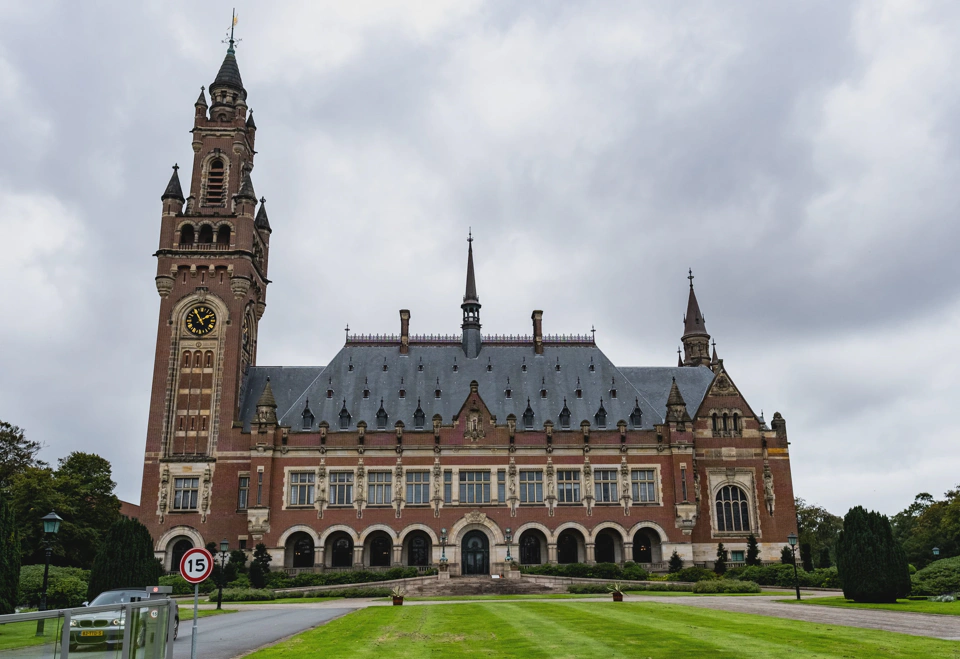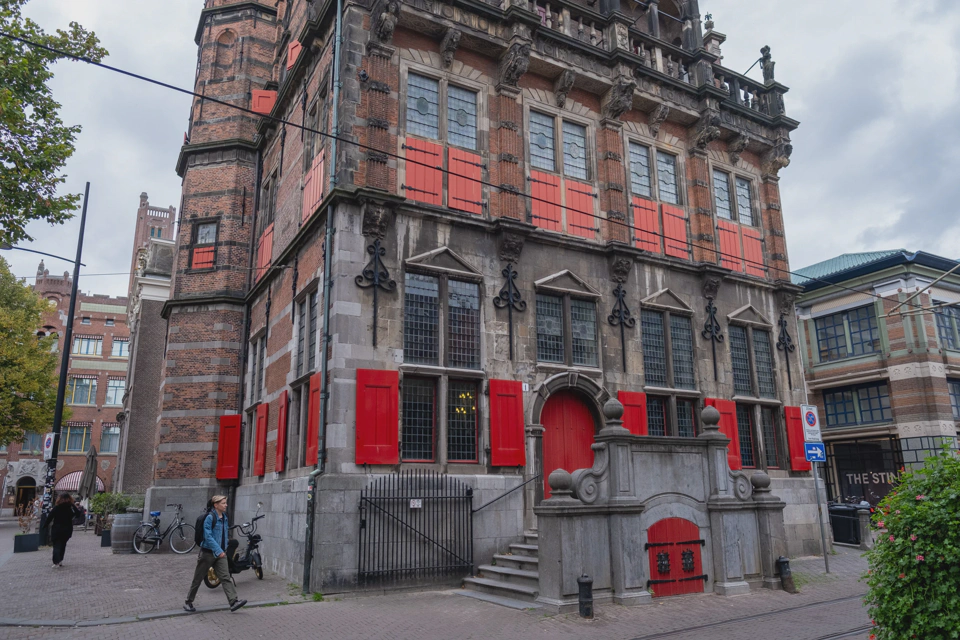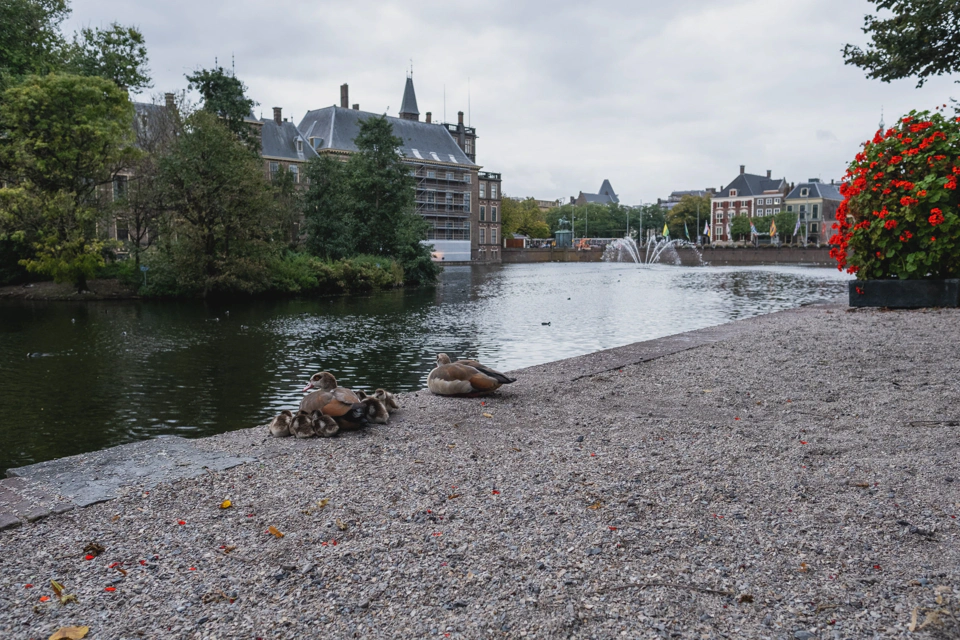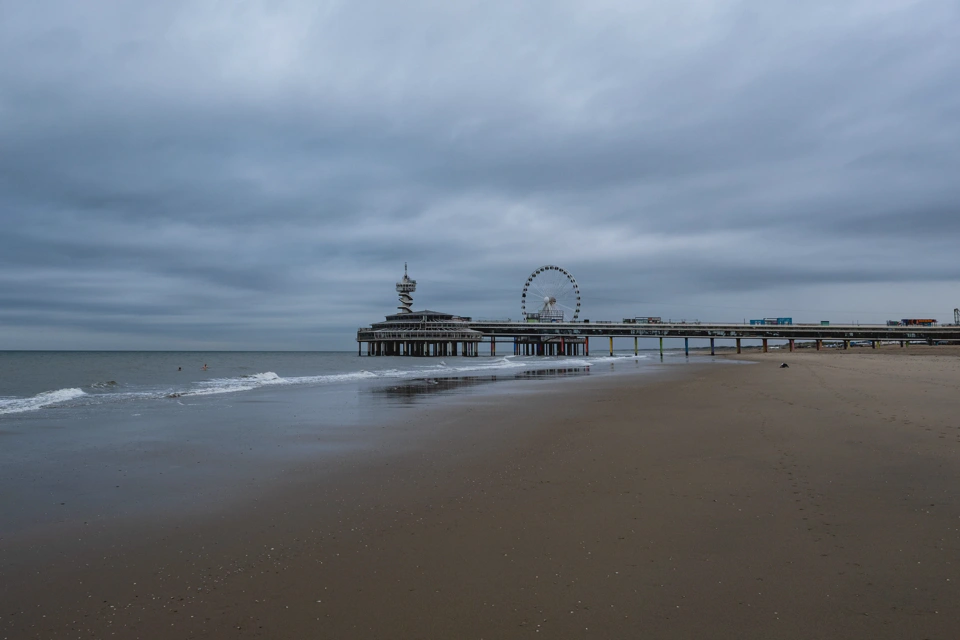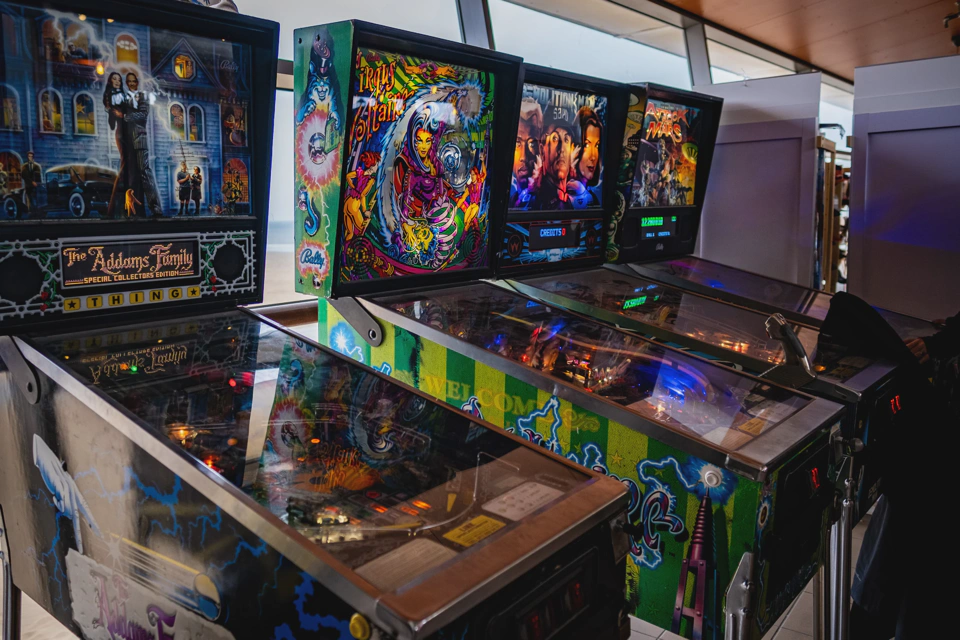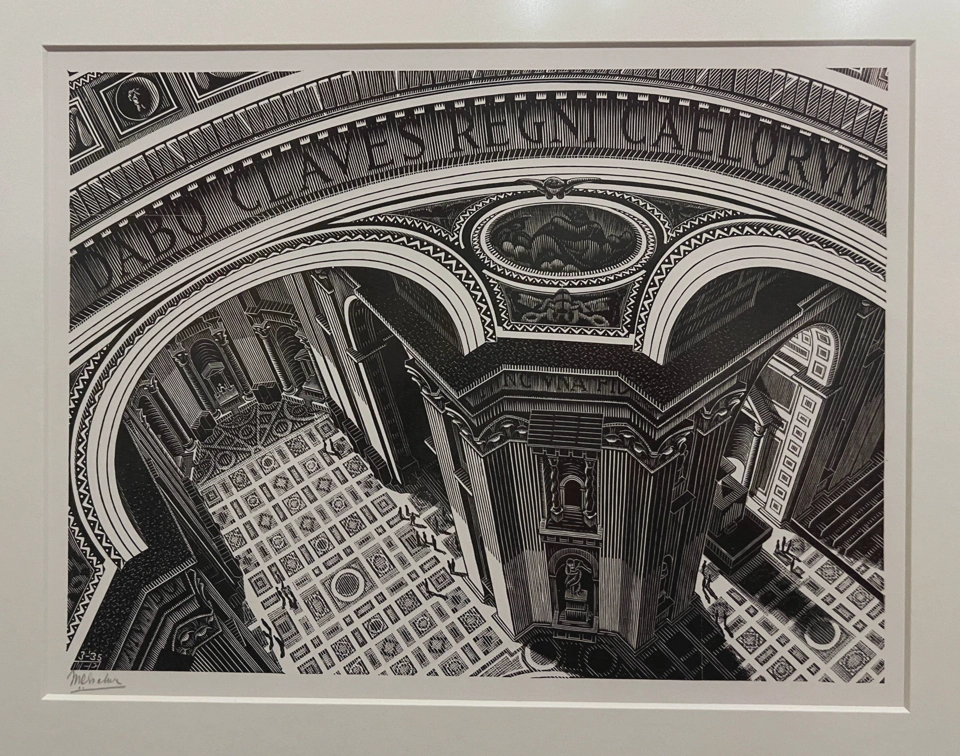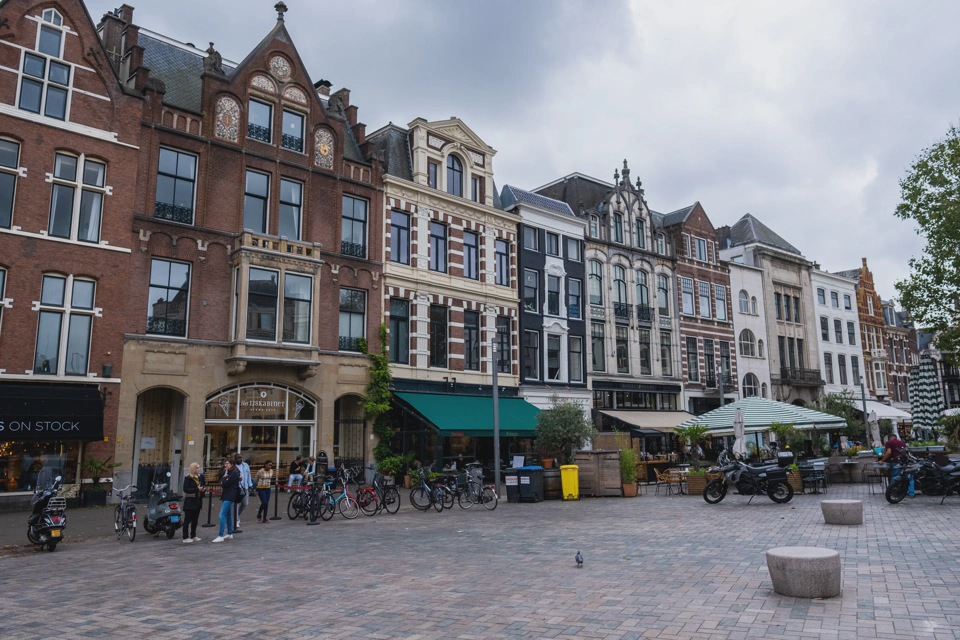Our last trip while in the Netherlands was to The Hague, in the West a bit further south than Amsterdam.
We arrived at The Hague close to noon but we immediately took a tram to go to the hotel to drop our backpacks. Loes had spent a summer at The Hague years ago and while we were on the tram she started tour guiding me by way of saying “Oh, I remember this street (points with her finger). […] Oh, and I also remember that street(points with her finger).”
After leaving the city center, the tram took us through a long and wide street next to the Scheveningse Bosjes (“Forest of Scheveningen”) where we saw one big fancy house after another partially hidden behind trees.
Our hotel was in Scheveningen, a seaside resort 15 minutes away from The Hague. We found it easily and after leaving our backpacks and refilling our water tumblers, we took a tram back to The Hague.
On the way back we got off at the Peace Palace, before arriving at the city center proper. The palace was the second most badass building I saw during the trip after Dordrecht’s town hall. We couldn’t go inside the palace, but we could visit a small adjacent visitor center where we spent the next thirty minutes listening to recordings about the history of the palace, and how the International Court of Justice and similar organisms in the Hague work. Like at the other museums we visited during this trip, we didn’t have to pay for the audio tour: we just needed our phones, and, in some cases, headphones. More convenient than human guides but also more isolating.
From the palace we walked to the city center. The Hague felt quieter than Amsterdam, it definitely had fewer tourists. I also saw more expensive stores and restaurants than in Amsterdam. I guess the combination of being a small city, being the seat of the Dutch government, having 104 embassies, and being home to very high profile international organizations contributes to this.
We walked around the government’s headquarters, the Binnenhof, where we met an older German tourist who had a thoughtful look in his eyes. After taking pictures close to me for a couple of minutes, he said “This is impressive,” while nodding to emphasize his point. I replied “I agree, this is really impressive,” and a polite moment later, he left the courtyard. I found his demeanor impressive, I don’t know why.
The outside of the Binnenhof, which Loes immediately recognized from frequently seeing it on TV, didn’t look inviting: grey sky, a building partly covered in scaffoldings for renovations that will take three years, and a small lake covered with algae and ducks.
A while later we reached the De Passage shopping arcade, which Loes remembered visiting years ago. De Passage was built in 1885 and is the oldest covered shopping center in the Netherlands. The arcade had a newer wider part, and a smaller part and still contained a stationary shop that Loes remembered visiting over twenty years ago. The area brought me back memories of Japan’s and Las Vegas arcades.
Other interesting sights from that day were the Paleis Noordeinde, the Mauritshuis, and a big square with buildings dating from the 1600s and little plaques near their doors giving a summary of their history.
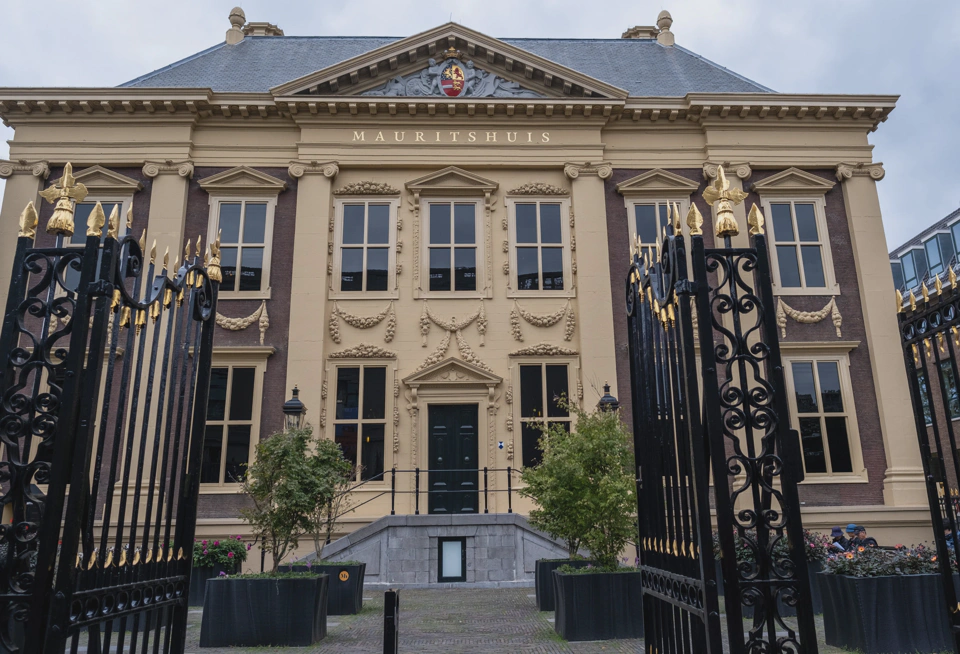
The next day we had breakfast at the hotel surrounded by Germans, and then left to walk along the promenade, explore the Skyview Pier, and enjoy the views of the North Sea. It was cloudy and chilly but that didn’t stop a Wimhoffers couple we saw taking a bath.
Part of the beach was busy because it was being re-filled with sand sucked out of the sea floor and poured onto the beach through a combination of ships, pipes, and machines. Where the new dark sand full of marine nutrients lay, thousands of seagulls were having a feast and causing an incredible amount of noise.
Along the promenade lay a spectacular five-star hotel, the Grand Hotel Amrâth Kurhaus, that reminded me of the Grand Budapest Hotel movie, and the Legoland Discovery Center, much more interesting and where I acquired a Stormtrooper keyring and a Mandalorian keyring.
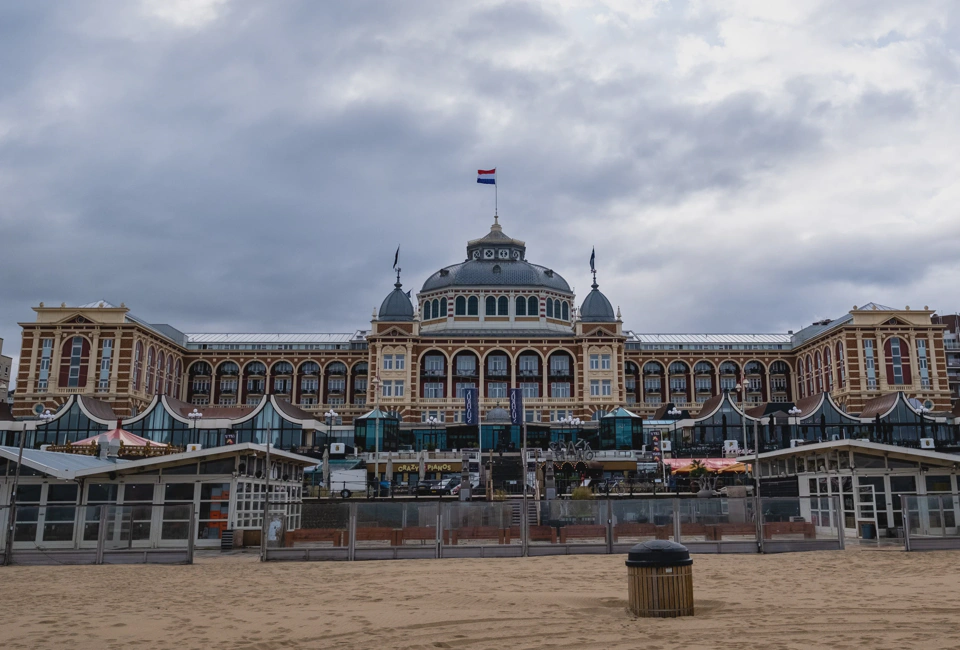
The Skyview Pier was connected to land via a walkway with two floors. We walked towards the pier on the outdoor walkway where everything was closed. At its end, we saw a panoramic restaurant, a crane for bungee jumping, a Ferris wheel, and an outdoor gym where a lone woman was moving iron.
We returned to the beach through the lower covered floor. Along the way, we found pinball machines and arcades from the 80s, one of the longest meshed kid playgrounds I’ve ever seen and that reminded me of Takeshi’s Castle, various food stalls, a VR rollercoaster ride, shops selling surfing equipment, Disney princesses dresses and the like. There is no denying, the Dutch are masters of diversity.
Back at the beach, the drizzle that had followed us since we left the hotel became more intense and we went back to the hotel to pack and head to The Hague where we had one last place to visit: The Escher Museum.
The museum was housed inside the Lange Voorhout Palace, a former royal residency from the 18th century. It had two floors with Escher’s works and an interactive area on the top floor. The rooms with Escher works were mixed with some of the works of his teacher, the Jewish Samuel Jessurun de Mesquita, killed during WWII.
Each room had a large informational panel describing how the royal family used each of the rooms. Constantly switching between Escher and the royal family felt like listening to two conversations at the same time and, after a couple of rooms, I dropped the royal family one.
After clearing the two first floors we took a break to eat something at the museum cafeteria. There we found a South East Asian woman covering eight tables and the counter all by herself. After we ordered our sandwiches she thanked us for being patient because she was forgetful and didn’t work fast enough. All the other tables were full of elderly Dutch who, in my mind, had just finished psychologically torturing the poor server. Future Juan, if and when you get older please be patient with poor overworked cafeteria workers.
After a cheese sandwich, we went to the third floor to have an overpriced optical illusion picture of us taken. I won’t show it here because one of us didn’t look at their best. The rest of the interactive area left no impression on me. They could have finished on a high note by leaving this floor closed off.
Back on the street, we realized we were done with all we wanted to see and decided to take the series of trains that would get us home.
The Hague reminded me a lot of Geneva, not because of their looks, they are quite different, but because of its international atmosphere, the affluent houses and important buildings, and the restaurants where you pay €100 per person.
